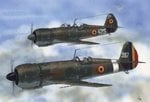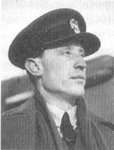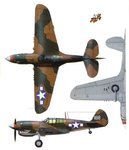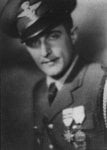I would be interested in finding out about some of the war partcipant countries best known Pilots...
Although he didn't take part in the war here is the story of Cpt. Dumitru "Pufi" Popescu. He was the first testpilot of the romanian IAR-80, a great flight instructor, aerobtics, and fighter pilot. "Pufi" starts his flight career in the year 1927, when he obtains the Observer Licence and is promoted to Second Lieutenen. In 1929 he obtains his Flying Licence, no. 744. He is promoted to Lieutenent on 8th june 1931, and then Captain on 10th may 1938. In 1940 he is dispached to the 7th Fighting Squadron, and appointed Commanding Officer to the 57th Squadron, equipped with Bf-109E... Unfortunately he would die in the 3rd december 1940 in a trgic aviation accident. He was training in formation with Cpt. Horning, practicing the 'turn in formation' routine where the germans applied the 'constant speed' technique, pilots changing formation their courses would intersect. During one of these manouvers his propeller touches the other aircraft, desintegrating. Cpt. Popescu tries to bail out but his Paraschute is cought in the plane. The other pilot mannages to land his plane safely, but Cpt. Dumitru Popescu looses his life.
I'm sorry I have no scaned photo... but I will post one as soon as I can...
Although he didn't take part in the war here is the story of Cpt. Dumitru "Pufi" Popescu. He was the first testpilot of the romanian IAR-80, a great flight instructor, aerobtics, and fighter pilot. "Pufi" starts his flight career in the year 1927, when he obtains the Observer Licence and is promoted to Second Lieutenen. In 1929 he obtains his Flying Licence, no. 744. He is promoted to Lieutenent on 8th june 1931, and then Captain on 10th may 1938. In 1940 he is dispached to the 7th Fighting Squadron, and appointed Commanding Officer to the 57th Squadron, equipped with Bf-109E... Unfortunately he would die in the 3rd december 1940 in a trgic aviation accident. He was training in formation with Cpt. Horning, practicing the 'turn in formation' routine where the germans applied the 'constant speed' technique, pilots changing formation their courses would intersect. During one of these manouvers his propeller touches the other aircraft, desintegrating. Cpt. Popescu tries to bail out but his Paraschute is cought in the plane. The other pilot mannages to land his plane safely, but Cpt. Dumitru Popescu looses his life.
I'm sorry I have no scaned photo... but I will post one as soon as I can...







